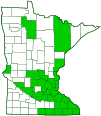white wild indigo
(Baptisia alba var. macrophylla)
Conservation • Wetland • Description • Habitat • Ecology • Use • Distribution • Taxonomy
Description |
White wild indigo is a 40″ to 80″ tall, erect, long-lived, perennial forb that rises from a deep taproot and rhizomes. The stems are unbranched in the middle and below, with ascending branches near the top below the inflorescence. They are light green or reddish-purple, hairless, and covered with a whitish, waxy bloom (glaucous). The leaves are alternate and on leaf stalks that are a little over ¼″ to ½″ long. There are a pair of 3 ⁄16″ to ⅜″ long, leaf-like appendages (stipules) at the base of the leaf stalk. The stipules are usually deciduous, with some falling off as the plant matures, but usually a few remaining on the plant at maturity. The leaves are divided into 3 leaflets. The leaflets are inversely lance-shaped or inversely narrowly egg-shaped, attached at the narrower end. They are 1¼″ to 2⅜″ long, and up to ¾″ wide. The upper side grayish-green or bluish-green and hairless. The underside is paler, hairless and glaucous. The margins are untoothed. The inflorescence is an erect, 8″ to 24″ long, spike-like cluster (raceme) of large, showy flowers at the end of the stem and branches. The inflorescences are positioned above the leaves. The central raceme is longer than the lateral ones. Below the inflorescence there are small, leaf-like appendages (bracts). The bracts are ¼″ to ½″ long and fall before or when the plant is in flower. The individual flowers are ½″ to ¾″ long and white. They are on ⅛″ to ⅜″ long flower stalks. There are 5 green sepals united at the base into a cylinder-shaped, 5 ⁄16″ long calyx tube, then separated at the tip into an upper and a lower lip. The upper lip is unlobed or notched. The lower lip is divided into 3 triangular lobes. There are 5 white petals. The petals form a butterfly-like corolla, as is typical of plants in the Pea family. They are organized into a broad banner petal at the top, two narrower, lateral, wing petals, and between the wings two petals fused into a keel. The banner is upright, folded back along the edges, notched in the middle, and shorter than the wings or keel. The wings and keel are straight. There are 10 stamens. The stamens are distinct, not fused together. The flowers are pollinated by bumble bees (Bombus spp.). There is no fragrance. The fruit is a large, drooping seedpod. It is ellipse-shaped to oblong, inflated, 1″ to 1½″ long, and 5 ⁄16″ to ½″ wide. It is green at first, turning brown as it ripens and black when it dries. |
Height |
40″ to 80″ |
Flower Color |
White |
Similar Species |
Cream wild indigo (Baptisia bracteata var. leucophaea) is a much smaller plant, no more than 24″ in height at maturity. The entire plant is persistently hairy. The stipules are larger, ⅜″ to 1¼″ long, and are persistent, remaining on the plant at maturity. The inflorescences spread laterally, and are positioned below the level of the leaves. The floral bracts are much larger, ⅜″ to 1¼″ long, and remain on the plant at maturity. The flowers are creamy yellow and appear earlier, May to June. |
Habitat |
Dry to moderate moisture. Prairies, savannas, open, upland woods, railroads. Full to partial sun. |
Ecology |
Flowering |
June to July |
Pests and Diseases |
|
Use |
White wild indigo seed is sometimes used in prairie restorations. |
Distribution |
||
|
Sources 2, 3, 4, 5, 6, 7, 24, 28, 29, 30. Turner, B.L., Overview of the Genus Baptisia (Leguminosae), Phytologia, December, 2006, pp. 253-268. |
|
| 2/4/2025 | ||
Nativity |
||
Native |
||
Occurrence |
||
Uncommon |
||
Taxonomy |
|
Kingdom |
|
Division |
Tracheophyta (Vascular Plants) |
Subdivision |
Spermatophytina (Seed Plants) |
Class |
|
Order |
Fabales (Legumes, Milkworts, and Allies) |
Family |
Fabaceae (Legumes) |
Subfamily |
Faboideae |
Tribe |
Sophoreae |
Genus |
Baptisia (wild indigos) |
Species |
Baptisia alba (white wild indigo) |
The large false indigo with large white flowers common in the central states was traditionally referred to as Baptisia leucantha. The name B. alba was applied to a similar species in the southeast that has very different fruit and usually smaller flowers. In 1969 it was determined that the name Dolichos lacteus referred to the plant then being called B. leucantha. It was older and valid and therefore had precedence. The species was then given the name B. lactea. This new name was used in several works in the subsequent years, including the widely influential Gleason and Cronquist (1991). A review of the type specimen of Baptisia alba by B.L. Turner at the British Museum in 1982 showed that specimen to be the same as B. lactea. B. alba is older and therefore takes priority over both B. leucantha and B. lactea. The southeastern species was renamed B. albescens and the central states species became B. alba. In 2006 B.L. Turner attempted to restore the southeastern species to B. alba and the central states species B. lactea. His reinterpretation was complex and not clear. ITIS, GRIN, and the Minnesota DNR use the name B. lactea. Almost all other sources use the name B. alba, including USDA Plants, Flora of North America, BONAP, Plants of the World Online, and World Flora Online. |
|
Subordinate Taxa |
|
Synonyms |
|
Baptisia albescens Baptisia albiflora Baptisia lactea Baptisia lactea var. lactea Baptisia lactea var. macrophylla Baptisia leucantha Baptisia leucantha var. divaricata Baptisia leucantha var. pauciflora Baptisia pedula macrophylla Baptisia pendula var. macrophylla Crotalaria alba Podalyria alba Sophora alba |
|
Common Names |
|
largeleaf wild indigo large-leaved wild indigo milky white indigo thin-pod white wild indigo white wild indigo |
|
Glossary
Bract
Modified leaf at the base of a flower stalk, flower cluster, or inflorescence.
Calyx
The flower cup. May be the group of outer floral leaves (sepals) collectively, or a tube with lobes.
Glaucous
Pale green or bluish gray due to a whitish, powdery or waxy film, as on a plum or a grape.
Raceme
An unbranched, elongated inflorescence with stalked flowers. The flowers mature from the bottom up.
Rhizome
A horizontal, usually underground stem. It serves as a reproductive structure, producing roots below and shoots above at the nodes.
Stipule
A small, leaf-like, scale-like, glandular, or rarely spiny appendage found at the base of a leaf stalk, usually occurring in pairs and usually dropping soon.
Visitor Photos |
||
Share your photo of this plant. |
||
This button not working for you? |
||
Nancy Falkum |
||
 |
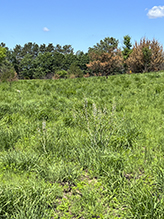 |
|
Oronoco Prairie SNA Wild White Indigo ‘Baptisia lactea’ w/ Grasshopper |
||
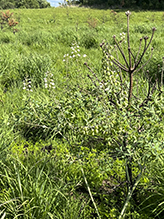 |
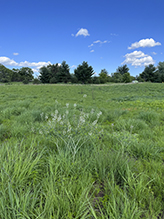 |
|
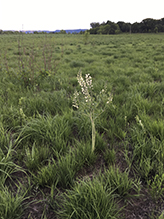 |
||
White Wild Indigo (Baptisia alba variety macrophylla Bean Family (Fabaceae)) |
||
Greg Watson |
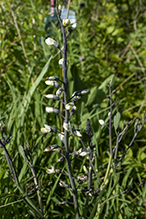 |
Kirk Nelson |
||
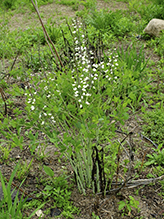 |
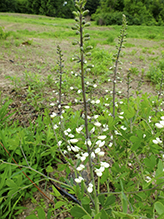 |
|
Found on the western end of McDonough Lake at the edge of what looks like a prairie restoration area. There were several groupings, so it looks like they were deliberately planted there. |
||
MinnesotaSeasons.com Photos |
||
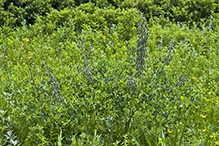 |
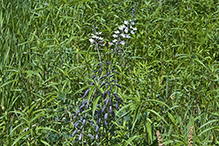 |
|
Plant |
Plant |
|
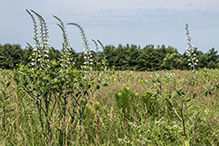 |
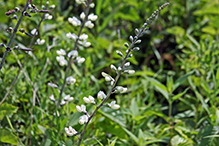 |
|
Plant |
Inflorescence |
|
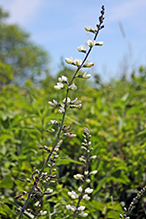 |
 |
|
Inflorescence |
Flowers |
|
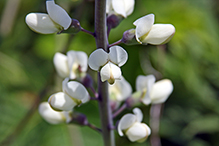 |
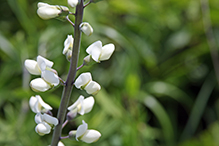 |
|
Flowers |
Flowers |
|
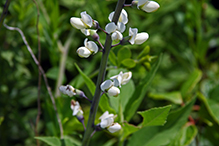 |
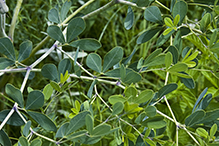 |
|
Flowers |
Leaves |
|
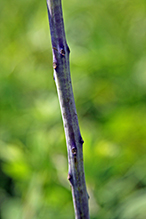 |
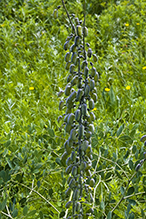 |
|
Stem |
Infructescence |
|
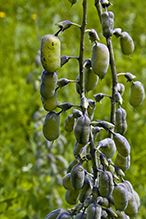 |
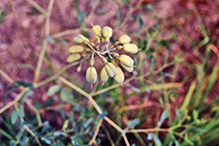 |
|
Infructescence |
||
|
||
|
||
Infructescence |
|
|
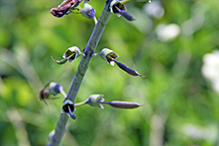 |
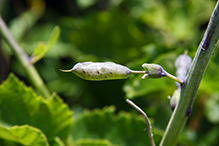 |
|
Developing fruit |
Developing fruit |
|
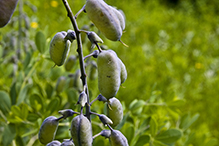 |
||
Mature fruit |
|
|
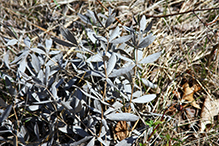 |
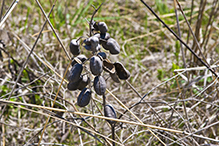 |
|
Winter |
Winter |

Slideshows |
Baptisia lactea (White False Indigo) |
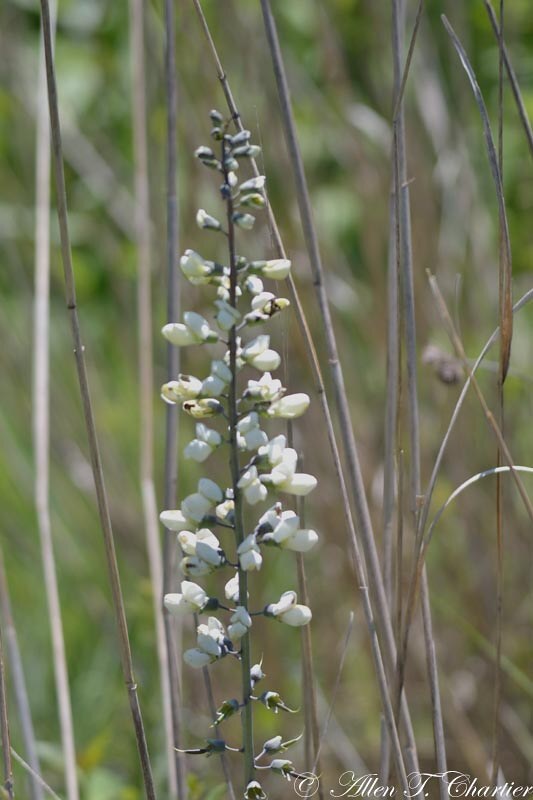
|
Baptisia leucantha WHITE WILD INDIGO |
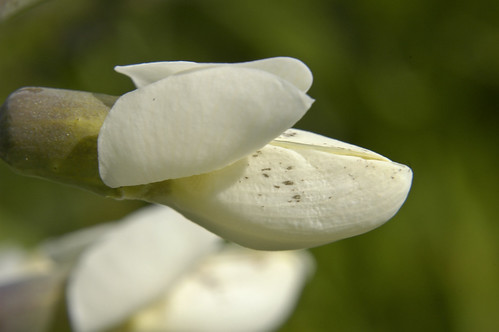
|

Visitor Videos |
||
Share your video of this plant. |
||
This button not working for you? |
||
|
Other Videos |
||
White Wild Indigo (Baptisia leucantha) |
About
Uploaded on Jun 9, 2010 http://www.prairiemoon.com - Sometimes called Baptisia alba, White Wild Indigo is shown here at Prairie Moon Nursery. |
baptista alba video |
About
Published on Jun 15, 2013 |

Visitor Sightings |
||
Report a sighting of this plant. |
||
This button not working for you? |
||
Nancy Falkum |
Location: Oronoco Prairie SNA Wild White Indigo ‘Baptisia lactea’ w/ Grasshopper |
 |
| Nancy Falkum 6/26/2022 |
Location: Weaver Dunes Preserve, Cox Unit |
 |
| Nancy Falkum 6/17/2022 |
Location: Weaver Dunes Preserve, Cox Unit |
 |
| Greg Watson 6/19/2022 |
Location: Apple Blossom Overlook Park |
 |
| Nancy Falkum 7/22/2021 |
Location: Kellogg Weaver Dunes SNA, Weaver Dunes Unit White Wild Indigo (Baptisia alba variety macrophylla Bean Family |
 |
| Kirk Nelson 6/24/2018 |
Location: Lebanon Hills Regional Park Found on the western end of McDonough Lake at the edge of what looks like a prairie restoration area. There were several groupings, so it looks like they were deliberately planted there. |
 |
MinnesotaSeasons.com Sightings |
||

|
Created: Last Updated: © MinnesotaSeasons.com. All rights reserved. |
